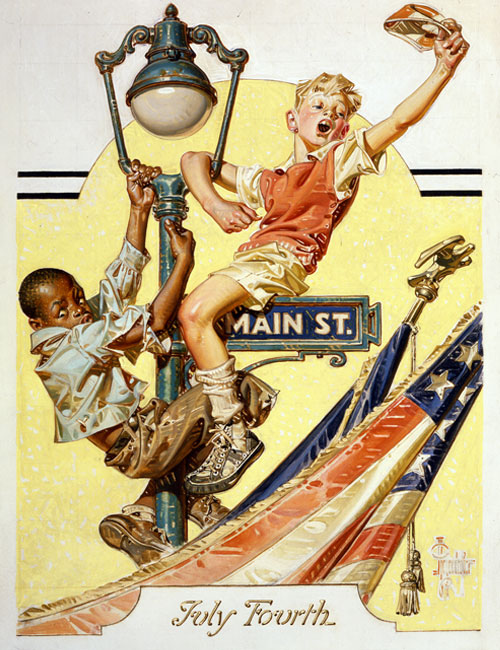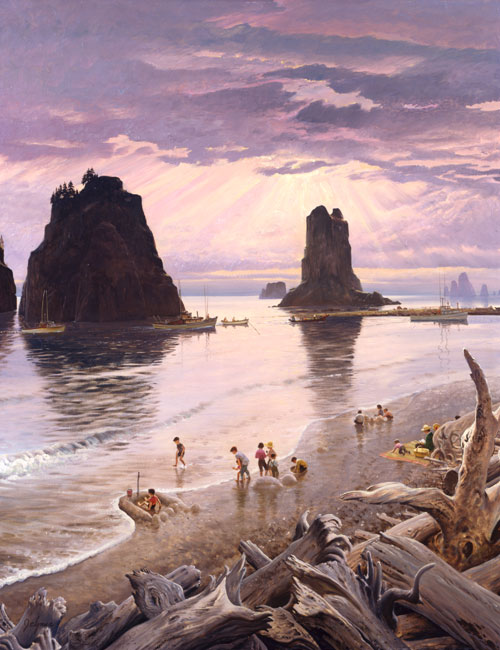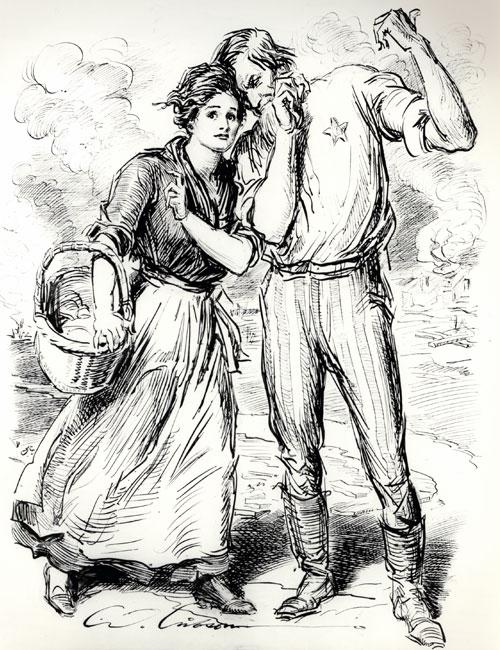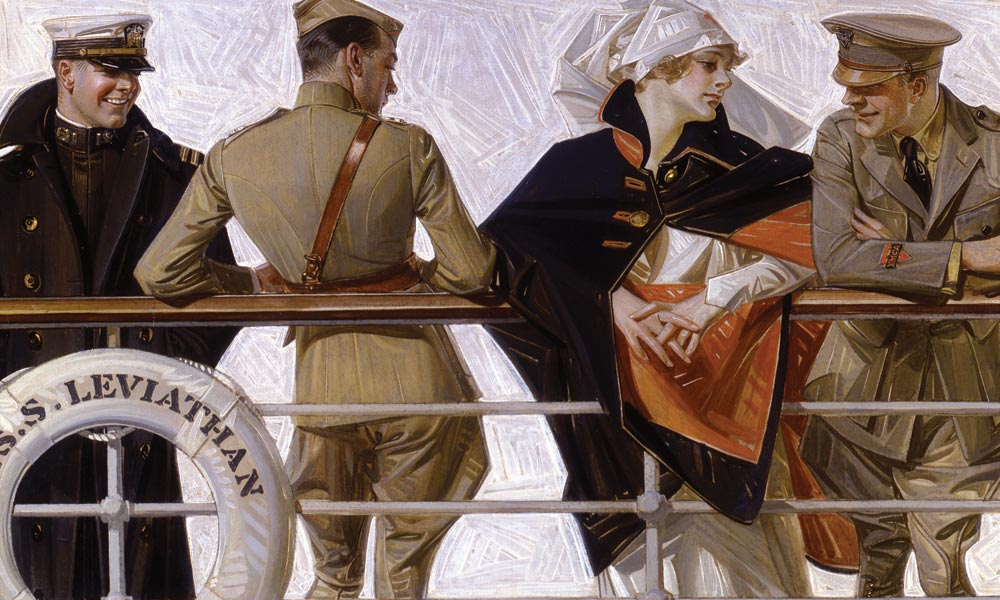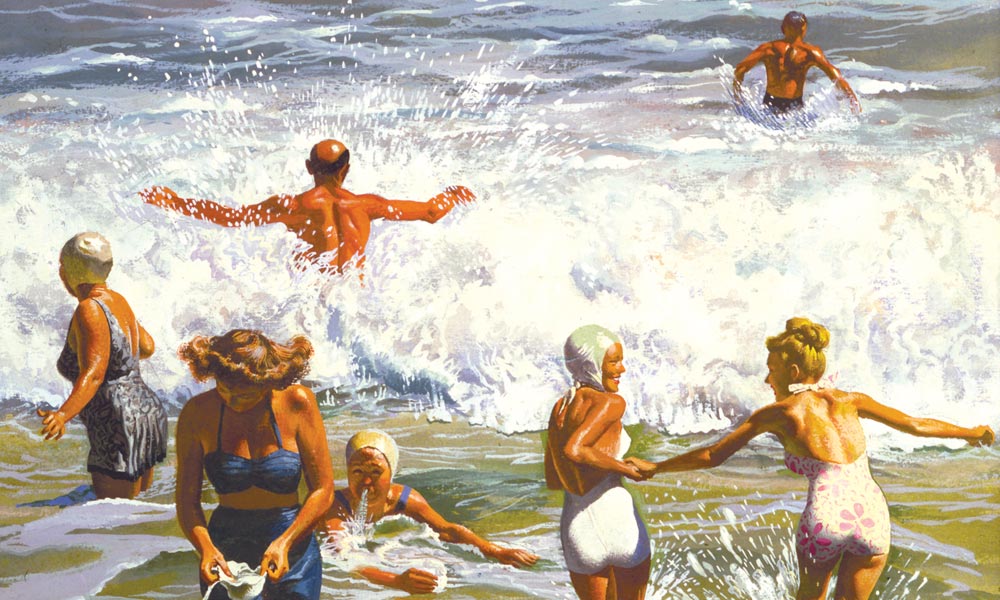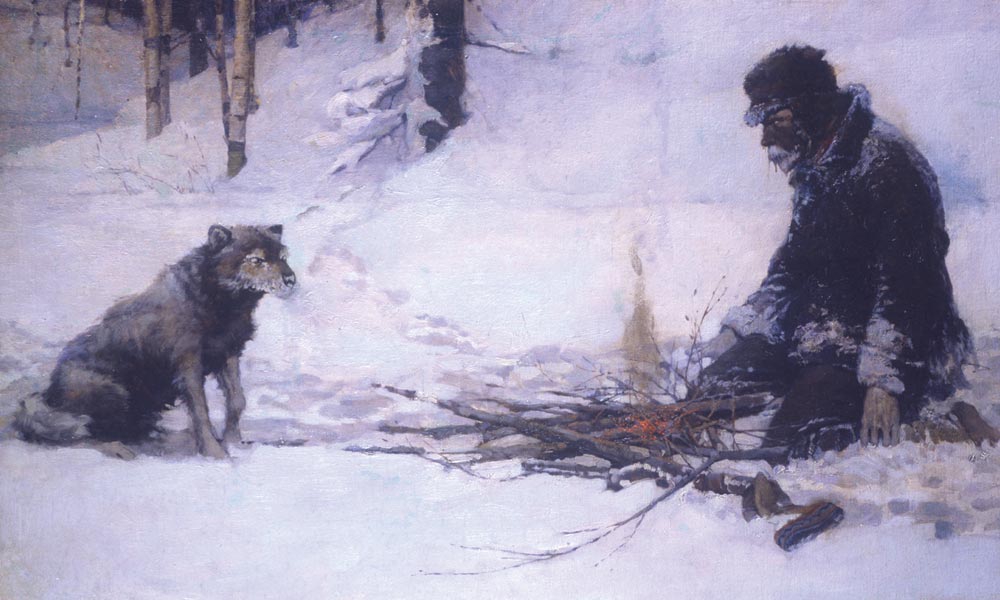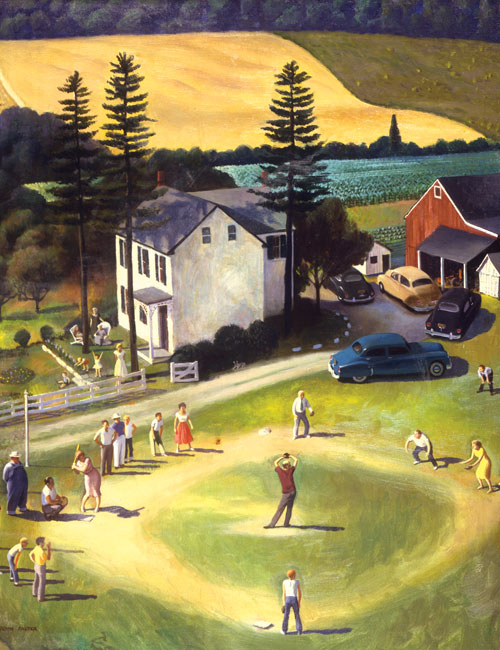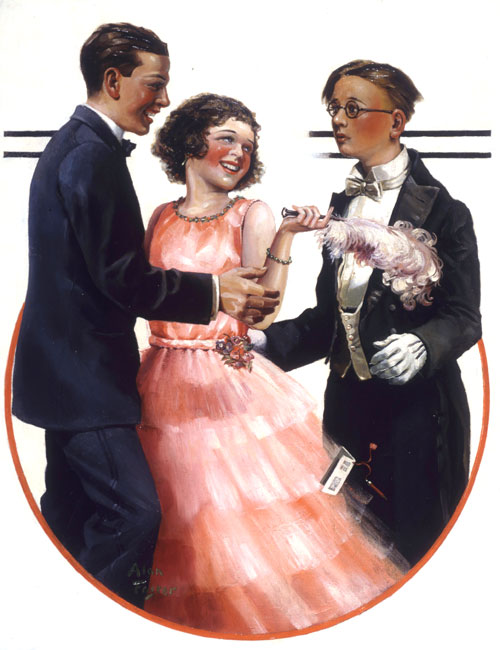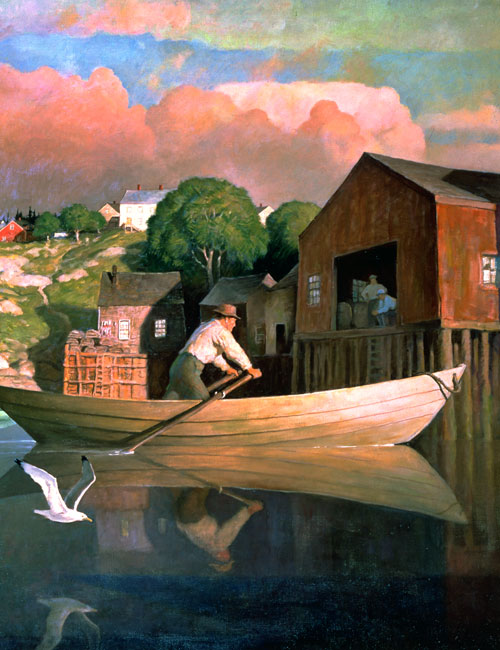
American Imagists Collection
The American Imagist Collection features masterpieces of illustration art, assembled over more than four decades, and is the largest such collection in the World. It includes the largest collection of original artworks by Maxfield Parrish, second largest collection of Norman Rockwell, and largest J.C. Leyendecker collection, as well as artworks by Howard Pyle ("Father of American Illustration"), NC Wyeth, Charles Dana Gibson, James Montgomery Flagg, Jessie Willcox Smith, Howard Chandler Christy, Violet Oakley, John Falter, John Clymer and over 150 others.
Illustration is art created to be reproduced in books, advertisements, periodicals, and in the new media. Unlike other more personal forms of art, illustration most often has a range of dictated parameters: esthetics by assignment, publishing deadlines, specified subject matter, and the restraints of dimensions and format. In its entirety, the Collection includes original artworks, prints (open and limited editions), significant memorabilia and vintage materials, artifacts (such as Rockwell’s first paint box and Parrish’s stippling paint brushes) and a plethora of photographic materials.
Illustration is a communicative tool, clarifying and defining our understanding of the world. Because of its employment in mercantile, military, and political applications, illustration also serves as a reservoir of our social and cultural history. Consequently, these works in our American Imagist Collection are a visual record of our American civilization, our history in images.
Illustration is a significant, endearing and enduring art form; arguably, the most American of American art.
We exhibit approximately 125 to 150 works at a time in Vernon Court, a turn-of-the-century mansion in the heart of Newport’s historic Bellevue Avenue. The mansion displays decorative arts and period furnishings to enhance the experience of viewing the artworks in context. To this end, we have acquired furniture by Zwiener and Jules Allard, and sculpture including the notable Hiram Powers' (1805-1873) idealization of America (1859) and Eve Disconsolate (1862), and Joseph Mozier’s (1812-1870) marble figure Jephthah’s Daughter, (1864), cited in The History of American Sculpture.
The American Imagists
In our cacophonous multimedia environment, it is sometimes hard to remember that for most of history, people did not have computers, TVs, radios, or smart phones. After the Civil War, society was much less complicated and news of the day was for the first time, disseminated as printed and illustrated matter. Literacy began reaching new heights in the United States and printing processes rapidly improved while decreasing in cost. The primary source of affordable home entertainment was a good book, and Americans read profusely! These were the beginnings of what would later become known as "The Golden Age of American Illustration", (1870s-1950s). It wasn't until the demise of the old Saturday Evening Post that the "Golden Age" of illustration drew to a close and new technologies allowed ground-breaking visual medias to develop.
American Illustration is an art form created to be reproduced, sometimes with accompanying text. American Illustration manifests how Americans view themselves; it is both social and cultural history pictured. American Illustration is a visual record which evokes responses from past, present and future audiences. It has become increasingly valuable as a reservoir of cultural images and a chronicle of cultural change.
Illustration art is more difficult to create than paintings inspired by abstract thoughts; it is a specific assignment defined by deadlines and usually comprises of a message dictated to the artist by the client. Yet American illustrators differ from all other artists and illustrators in that they created purely American icons. They are increasingly known as The American Imagists.
It is their images which first portrayed our icons: Uncle Sam (James Montgomery Flagg’s noted self-portrait exclaiming "I Want You!"); a baby ringing in the New Year (J.C. Leyendecker’s putto on the January covers of Saturday Evening Post for dozens of years); the "Gibson Girl" (an exquisite example of an American beauty by Charles Dana Gibson); Mother’s Day celebrated with flowers (first devised by J.C. Leyendecker for a Post cover); Miss Liberty (Norman Rockwell's symbol of American women taking up men's jobs during WWII); and so many others. These are the images of our history, lifestyles, dreams, and our icons, real and imagined!
Since the late 1960s, artworks from our American Imagist Collection have been loaned to exhibitions in major art capitals of the world: New York, Paris, Rome, and Tokyo. We loaned works to The National Portrait Gallery, Smithsonian Institution, Birmingham Museum of Art, World Financial Center, National Academy of Design, Louvre, Palazzo delle Esposizione, Guggenheim Museum, The National Arts Club, Society of Illustrators, The Brandywine River Museum, Farnsworth Art Museum, Portland Museum of Art, Delaware Art Museum, The National Museum of American Art, Daimaru Museum, Isetan Museum, Nagoya Museum, Fukishima Prefectory Museum, Virginia Art Museum, High Museum, Naples Museum of Art, Nassau County Museum of Art, Odakyu Museum, Ogunquit Art Museum, Norman Rockwell Museum and many others; such exhibits recognize the importance of this significant Collection, this American national treasure.
In 2010, the NMAI loaned a Norman Rockwell exhibition to the Dulwich Picture Gallery in London, England's oldest public art museum renowned for its Old Master Collection (Rembrandt, Canaletto, Vermeer, anon). Celebrating Dulwich's 200th anniversary, this milestone Rockwell exhibition was named the "best art exhibition in England in 2011," proving the impact American illustration has on the global art community.
American Illustration is coveted by collectors and museums alike. It has something which everybody, both art-appreciators and newcomers, wish to possess: realistic, historically relevant, and nostalgic works, which are beautiful and have content. The fine arts establishment, critics and academicians now accept illustration as "the most American of American art." The images of the World’s greatest nation are sought after globally and are appreciated in new light at this propitious beginning of the second millennium.

